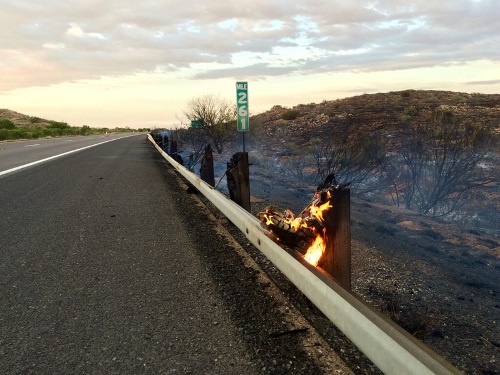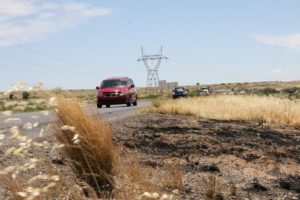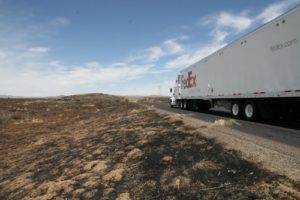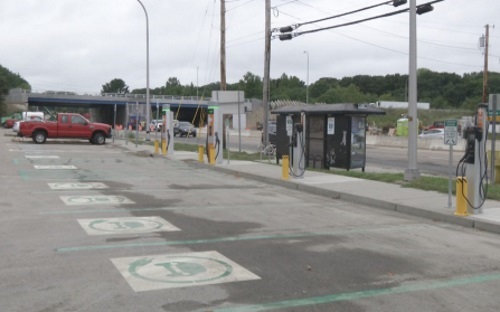A roundup of headlines curated for state transportation environmental professionals
FEDERAL ACTION
Groups Call for Federal Program Extension, State DOT COVID Aid – AASHTO Journal
U.S. Department of Transportation Seeks Applicants for Railway-Highway Crossings Grants – USDOT (Press Release)
DOT rolls out National Freight Strategic Plan – Freightways
Centering Planning in the Federal Surface Transportation Debate – American Planning Association (Blog)
Trump’s deregulatory disregard for law and science – The Hill (Opinion)
Tribes and Environmental Groups Sue Trump Administration to Preserve Clean Water Protections – Earthjustice
Trump’s U.S. EPA chief claims climate-change fight hurts the poor – Reuters
The Forest Service’s rule changes undercut its once-proud mission – The Hill (Opinion)
COVID-19
Daily Travel during the COVID-19 Pandemic – USDOT Bureau of Transportation Statistics
E-scooters and bikes rebound as COVID-19 crisis keeps on rolling – Marketplace
NEPA
FAA Releases LaGuardia AirTrain Draft Environmental Review – FAA (Press release)
21 States Sue Trump Administration for Rollback of NEPA – One Green Planet
INFRASTRUCTURE RESILIENCE AND SUSTAINABILITY
ETAP Podcast: Hawaii DOT’s Ed Sniffen – AASHTO Journal
FAA Disburses $1.2B in Airport Safety/Infrastructure Grants – AASHTO Journal
Large states with small populations use more energy for transportation – Talk Business & Politics
GDC Announces Updated Financial Plan Submission for Hudson Tunnel Project – Gateway Program Development Corporation (Press release)
Virginia rail deal on track with completion of environmental planning for new Potomac River crossing – Richmond Times-Dispatch
MY VIEW: Transportation development districts offer innovative way to fund infrastructure projects – Cincinnati Business Courier (Opinion)
AIR QUALITY
Mid-Atlantic, Northeast states collaborate to cut carbon emissions from transportation – Yale Climate Connections
ENVIRONMENTAL JUSTICE
New Jersey Passes Landmark Environmental Justice Legislation – National Law Review
Can Planting Trees Make a City More Equitable? – CityLab
NATURAL RESOURCES
VTrans Offers Water Quality Improvement Project Grants – AASHTO Journal
Study: Fewer wildlife deaths as traffic dips during pandemic – AP
Goats take a bite out of Brainerd park invasive species – Bemidji Pioneer
CULTURAL RESOURCES
A citywide survey is not enough. Philly needs a holistic approach to make historic preservation more equitable – WHYY (Opinion)
HEALTH AND HUMAN ENVIRONMENT/ACTIVE TRANSPORTATION
Connecticut DOT Offering Community Connectivity Grants – AASHTO Journal
84 Million Trips Taken on Shared Bikes and Scooters Across the U.S. in 2018 – NACTO (Press Release)
GDOT officials explain noise effects of Ga. 400 toll lanes during Q&A session – Reporter Newspapers
‘They seem to be up to no good’: Late-night joyriders led to electric scooters’ suspension in Dallas, officials say – Dallas Morning News
Oregon could better reach out to bike, pedestrian groups before construction projects, audit finds – The Oregonian
San Diego Airport gets $18 million federal grant to reduce noise in nearby homes – KUSI-TV
TRB RESOURCES/ANNOUNCEMENTS
Measuring Quality of Life in Communities Surrounding Airports – TRB ACRP
Webinars: Transportation Planning to the Extreme for Weather and Climate Change – TRB
Future Electric Vehicle Charging Demand at Highway Rest Areas and Implications for Renewable Energy Penetration in California – National Center for Sustainable Transportation (NCST)
FEDERAL REGISTER NOTICES
Early Scoping Notice for Charlotte Area Transit System (CATS) Proposed LYNX Silver Line Project in the Charlotte Metropolitan Area, North Carolina – FTA (Early Scoping Notice)
Federal Motor Vehicle Safety Standards; Minimum Sound Requirements for Hybrid and Electric Vehicles – NHSTA (Interim final rule; request for comments)
National Priorities List – EPA (Final Rule)
Hours of Service of Drivers; Pilot Program To Allow Commercial Drivers To Pause Their 14-Hour Driving Window – Federal Motor Carrier Safety Administration (Notice of proposed pilot program; request for comments)
Endangered and Threatened Wildlife and Plants; Regulations for Designating Critical Habitat – U.S. Fish and Wildlife Service (Proposed Rule)





